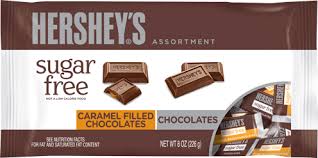In its ‘US Chocolate Industry 2013-2018: Trends, Forecast and Opportunity Analysis’ report, the organization projects that the industry will grow to an estimated $19.3bn by 2018. It expects the US population, a third of whom are obese, to explore healthier options in the years ahead.
Sugar-free chocolate: Mainstream or niche?
It predicts that the “hectic lifestyle of consumers and innovative chocolate products, doubling as health supplements, chocolate for the diet conscious, low calorie chocolates etc. [will] lead to significant market growth”.
The report runs contrary to ConfectioneryNews predictions for 2014, which anticipate the sugar-free chocolate segment to remain a global niche, mainly due to the added cost of sweeteners, and their supporting ingredients, compared to using sugar alone.
Where do calories in chocolate come from?
Almost half of calories in chocolate comes from fat – the main source of which is milk fat in milk chocolate and cocoa butter. Sugar accounts for about 30-40% of the calories.
Euromonitor valued the global reduced fat chocolate market at $439.5m in 2012 and forecast 13.4% growth for 2013, driven by the US, which accounts for over 80% of sales in the sector.
Big players and low-calorie chocolate

Hershey, the leading US chocolate player has sugar-free options for leading brands such as Hershey and Reese’s, which use maltitol and polyglucitol instead of sugar. It claims these products contain 20% fewer calories than their sugar counterparts. The firm also launched portion-controlled brand Simple Pleasures in 2012, which it says contains 30% less fat compared to the average leading milk chocolates.
Nestlé has had great success with its Skinny Cow brand, which contains 110 calories and 6g of fat per bar. The product uses a wafer coated with milk chocolate and carries the term “milk chocolate flavor”
For chocolate to be considered chocolate under CODEX standards, it must contain 35% total cocoa solids, of which no less than 18% must be cocoa butter. Those that don’t meet this standard often use the term “chocolate flavor”.
Labeling and government pressure
The US chocolate industry has committed to putting calorie information on the front of packs, through the National Confectioners Association (NCA) ‘Treat Right’ program.
However, the US chocolate industry has yet to make sweeping pledges to reduce calories, unlike in the UK where some major manufacturers such as Mars have signed up to a government-led calorie reduction pledge.
Obstacles
Lucintel’s report also identified potential barriers to industry growth.
“Rising prices of raw materials, especially for cocoa beans, is affecting the manufacturing cost of chocolates which can pose a challenge for market growth,” it said.
Rabobank has projected that cocoa prices will rise around 12% this year compared to 2013 levels due to adverse weather in the Ivory Coast and rising demand for chocolate products in Asia.
“Other factors such as intermittent raw material supply and lack of efficient distribution channels in emerging markets create challenges for the chocolate industry,” continued Lucintel.
Traditional retailers still account for almost 40% of retail sales across China, a key growth market for the chocolate industry. Negative performance in this emerging market could impede investment in developed markets like the US.
